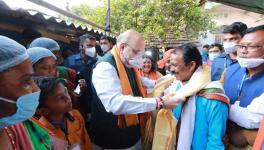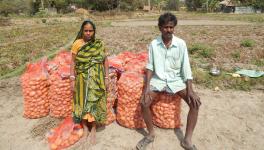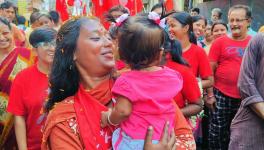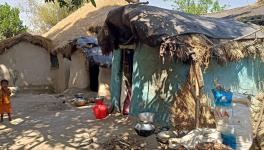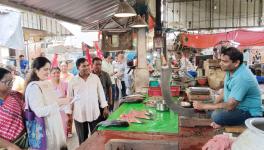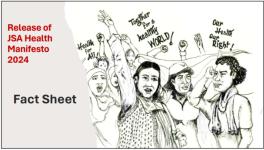West Bengal’s Public Healthcare Struggles with Lack of Staff
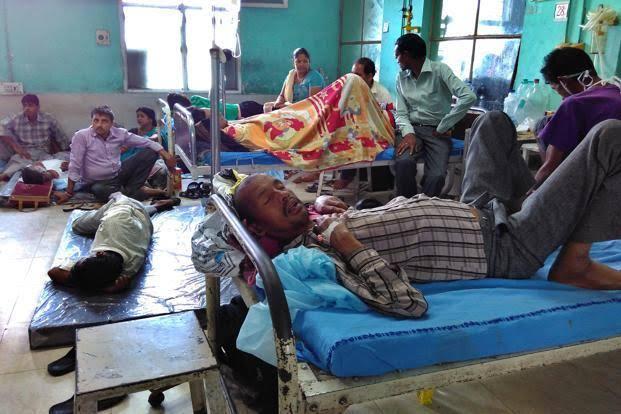
Image for representational use only.Image Courtesy : Livemint
West Bengal Chief Minister Mamata Banerjee on Sunday, September 29, said that healthcare is free at all government hospitals in the state. On the occasion of World Heart Day, the minister said, “Today is #WorldHeartDay. A healthy heart is essential for a healthy body. You will be happy to know that our Govt in #Bangla provides free surgery to children with cardiac ailments under #SishuSathi scheme.” She added, “Healthcare is also free in our state at all government hospitals.”
However, healthcare being free in the state does not mean it is accessible or adequate for all. The public-funded healthcare in West Bengal, like several other states across the country, struggles with lack of proper infrastructure and shortage of doctors and staff. The government hospitals are ill-equipped to treat the crowd of patients coming in, forcing the ordinary citizens to rely on expensive treatments in private hospitals.
As per the data presented in the Statistical Yearbook India 2018, published by the Ministry of Statistics and Programme Implementation, the state’s primary and secondary healthcare systems both struggle with shortage of staff and inadequate infrastructure.
The sub-centres, which are the most peripheral and first point of contact between the primary healthcare system and the community, grapple with lack of male health workers. According to Indian Public Health Standards (IPHS), each sub-centre should have one female health worker or auxiliary nurse midwife (ANM), and one male health worker. While the sub-centres in West Bengal have an adequate number of female health workers and ANMs, there is a massive shortfall of male health workers. According to the Rural Health Statistics (RHS) 2018,10,357 male health workers are needed in the state, and the number of posts sanctioned by the government is 9,171, out of which only 2,848 are in position, leading to a shortfall of 7,509 workers.
The same shortage of staff is also seen at Primary Health Centres (PHCs), which form the cornerstone of rural health services—a first port of call to a qualified doctor of the public sector in rural areas for the sick and for those who report directly or are referred from sub-centres for curative, preventive and promotive healthcare. As per IPHS norms, PHCs have a minimum requirement of 11 medical practitioners of various capacities including doctors, pharmacists, nurses, lab technicians, and male and female health workers and assistants.
Out of 913 female health assistants needed at PHCs across the state, only 277 are in position, leading to a shortfall of 636 workers, which is almost 70% of the required amount. The number of sanctioned posts is 461. The situation is even worse for male health assistants. While the number of required assistants remain the same, the number of sanctioned posts is an even lesser 316, out of which only 113 posts are filled, causing a shortfall of 800 workers. Only three PHCs in the state have more than one doctor, which is 588, that is 64.4%, function with only one doctor, 85 PHCs do not have a doctor.
The situation is similar at Community Health Centres (CHCs), which constitute the secondary level of healthcare. The National Rural Health Mission (NRHM) envisages that the CHCs should provide all essential services to the rural population, including routine and emergency care in surgery, medicine, obstetrics and gynaecology, dental, and AYUSH. According to Indian Public Health Standards (IPHS), CHCs should also have newborn stabilisation units, facilities for medical termination of pregnancy (MTP) for second trimester pregnancy, Integrated Counselling and Testing Centre (ICTC), blood storage, and Anti-retroviral Therapy centre.
According to RHS 2018, even though 348 surgeons are required at CHCs across the state, the number of sanctioned posts is zero, and hence, no surgeons have been recruited. Out of the 348 obstetricians and gynaecologists required, only 58 are in position, resulting in a shortfall of 290 doctors. Of 348 physicians required, just 42, that is 12.6% are in position. The number is even worse for paediatricians, with only 25 doctors in position, causing a shortfall of 92.81%. Out of total 1,392 specialists required in PHCs across the state, only 125 are in position, resulting in a total shortfall of 91%. The situation is similar for laboratory technicians.
As the sub-centres, PHCs and CHCs battle with shortage of staff, the ordinary people dependent on public-funded healthcare system are forced to head to hospitals for even the most basic ailments. While the doctor population ratio in West Bengal, with each government allopathic doctor catering to 10,411.15 people is very close to the national average of 9,085.9 people per doctor, the workload becomes unmanageable as primary and secondary healthcare centres are unable to cater to the needs of the people. The data shows that the free healthcare being provided by the government will not benefit the people as long as the infrastructure is not enough to help the people, who have to opt for paid healthcare.
Get the latest reports & analysis with people's perspective on Protests, movements & deep analytical videos, discussions of the current affairs in your Telegram app. Subscribe to NewsClick's Telegram channel & get Real-Time updates on stories, as they get published on our website.









